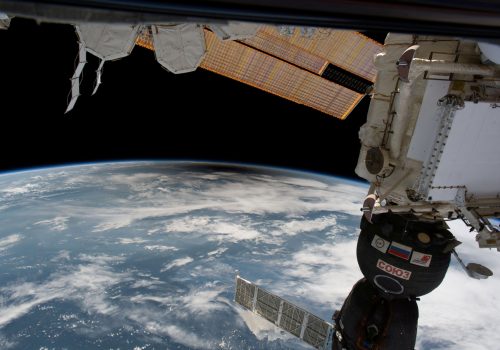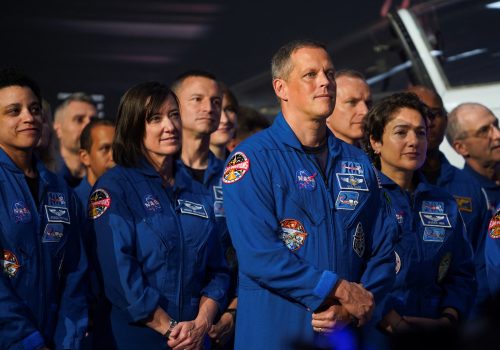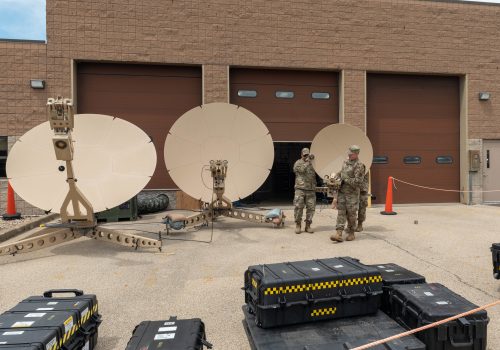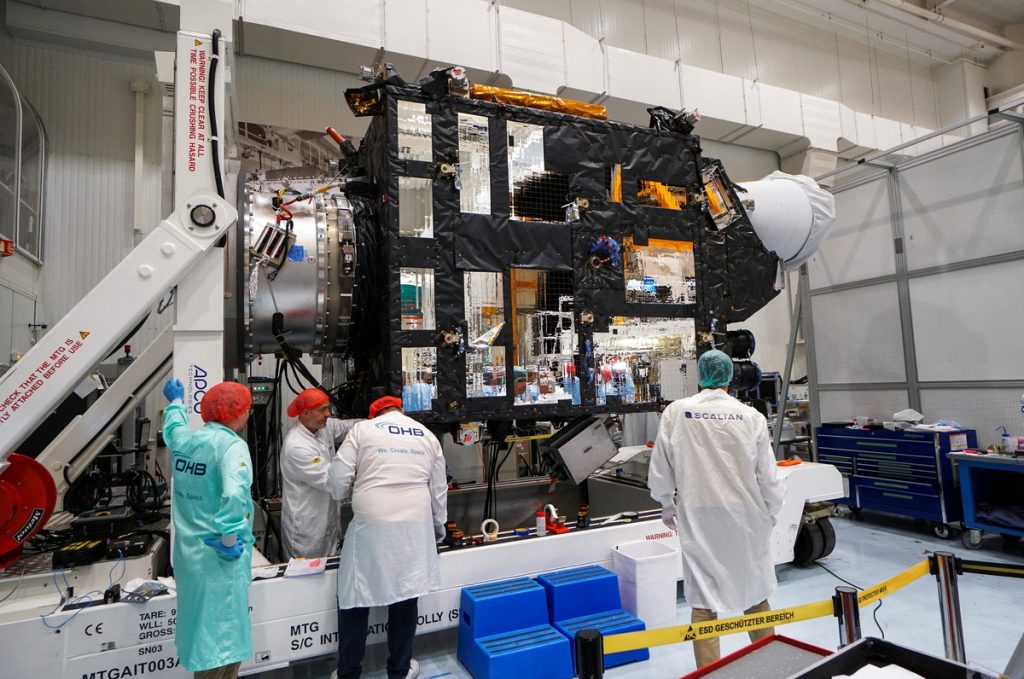Harnessing allied space capabilities
The United States’ vast network of alliances and partnerships offers a competitive advantage—this is especially evident in outer space. Often characterized as a global commons, space holds value for all humankind across commercial, exploration, and security vectors. As technological advancements trigger a proliferation in spacefaring nations, the United States and its allies and partners are confronted with new challenges to and opportunities for collective action.
This series examines how US space strategy can recognize the comparative advantages of allies and partners in space and best harness allied capabilities:

Robert Murray examines the state of the commercial space market and key drivers, considering how government investments in enabling activities can support broader national imperatives.

Tiffany Vora analyzes current US space exploration goals and the capabilities that will be critical to achieving them, highlighting arenas where US allies and partners are strongly positioned for integration.

Nicholas Eftimiades assesses the potential benefits to US national security offered by allied integration, identifying pathways for cooperating with allies and partners on their space capabilities.
The way forward for US and allied coordination in space
Several common themes emerge across this series. First, outer space is characterized by a transforming landscape and market. Commercial tech advancements—including the introduction of small satellites, advancements in Earth observation and asteroid mining, and the rise of space tourism—drive the development of what Murray terms the “NewSpace” market. The way in which the United States and its allies do business in space is changing, with the private sector leading in capability development and the government becoming the consumer. The burgeoning space sector, totaling $464 billion in 2022, is attracting allies and adversaries alike to invest in and expand their space operations. Strategic competitors recognize they can now target US and allied commercial and national security imperatives from space.
Second, this increasingly competitive environment further accentuates the value of alliances and partnerships in space. As Vora highlights, US and allied cooperation in space today rests on the Artemis Accords, which advances shared principles for space activity, and is a key mechanism for the international transfer of expertise, technology, and funding. The US Department of Defense also houses the Combined Space Operations Vision 2031, which offers a framework to guide collective efforts with several allies, and a host of collaborative exercises and wargames. Eftimiades describes the cross-cutting benefits of this collaboration: it alters the decision calculus for hostile actors, threatening a response from a coalition of nations; offers the ability to share capabilities, responsibilities, and geostrategic locations; and creates consensus in setting the norms for responsible space behavior. Current collective efforts in the space domain are limited, albeit expanding, considering the benefit allies and partners bring to the table.
Third, in order to promote stronger collaboration among the United States and its key allies and partners, it is necessary to address and overcome the barriers that stand in the way. Vora identifies protectionist policies and regulations that act as hurdles to the transfer of key technologies and information. Murray explains that lengthy government contract timelines, coupled with insufficient investment in technologies critical to NewSpace, hinder US and allied commercial advancement. Eftimiades argues that the United States has yet to articulate a strategy for space coordination, highlighting a lack in transparency with allies and partners on capability and data gaps.
The authors put forth ideas to pave the way forward for US and allied space development. Recommendations for the United States and its allies and partners include conducting gap analysis on where allied investments can complement existing US capabilities, establishing a “space bank” to support NewSpace actors, and formulating a US and allied strategy for space development, building upon the Artemis Accords. To maintain its competitive advantage in space, the United States cannot go at it alone.
Read the full papers:
Acknowledgements
To produce this report, the authors conducted a number of interviews and consultations. Listed below are some of the individuals consulted and whose insights informed this report. The analysis and recommendations presented in this report are those of the authors alone and do not necessarily represent the views of the individuals consulted. Moreover, the named individuals participated in a personal, not institutional, capacity.
- Allen Antrobus, strategy director, air and space, Serco
- John Beckner, chief executive officer, Horizon Technologies
- Dr. Mariel Borowitz, associate professor, Sam Nunn School of International Affairs, Georgia Institute of Technology
- Steven J. Butow, director, space portfolio, Defense Innovation Unit
- Chris Carberry, chief executive officer and co-founder, Explore Mars
- Darren Chua, EY space tech consulting partner and Oceania innovation leader, Ernst & Young Australia
- Kenneth Fischer, director for business development North America, Thales Alenia Space
- David Fogel, nonresident senior fellow, Forward Defense, Scowcroft Center for Strategy and Security, Atlantic Council
- Dr. Yasuhito Fukushima, senior research fellow, National Institute for Defense Studies, Japan
- Peter Garretson, senior fellow in defense studies, American Foreign Policy Council
- Sqn Ldr Neal Henley, chief of staff, Joint Force Space Component, UK Space Command
- John Hill, deputy assistant secretary of defense for space and missile defense, US Department of Defense
- Komei Isozaki, Japan Chair fellow, Hudson Institute
- Mat Kaplan, senior communications adviser, The Planetary Society
- Cody Knipfer, director of government engagement, GXO, Inc.
- Dr. Jerry Krasner, independent consultant, US Department of Defense
- Massimiliano La Rosa, director, marketing, sales, and business, Thales Alenia Space
- Ron Lopez, president and managing director, Astroscale U.S. Inc.
- Douglas Loverro, president, Loverro Consulting, LLC; former deputy assistant secretary of defense for space policy, US Department of Defense
- Russ Matijevich, chief innovation officer, Airbus U.S. Space & Defense, Inc.
- Jacob Markish, vice president, strategy and corporate development, Thales North America
- Brig Gen Bruce McClintock, USAF (ret.), lead, RAND Space Enterprise Initiative, RAND Corporation
- Col Christopher Mulder, USAF, active-duty officer, US Air Force; 2020-2021 senior US Air Force fellow, Scowcroft Center for Strategy and Security, Atlantic Council
- Dr. Eliahu Niewood, vice president, Air and Space Forces Center, MITRE Corporation
- Dr. Jana Robinson, managing director, Prague Security Studies Institute
- Audrey Schaffer, director for space policy, National Security Council
- Paul Szymanski, director, Space Strategies Center
- Dr. Christian Willmes, doctor of philosophy, University of Oxford
Generously Sponsored By

About the authors

Robert Murray
Senior Lecturer and Director, Master of Science in Global Innovation and Leadership Program, Johns Hopkins University
Watch the launch event
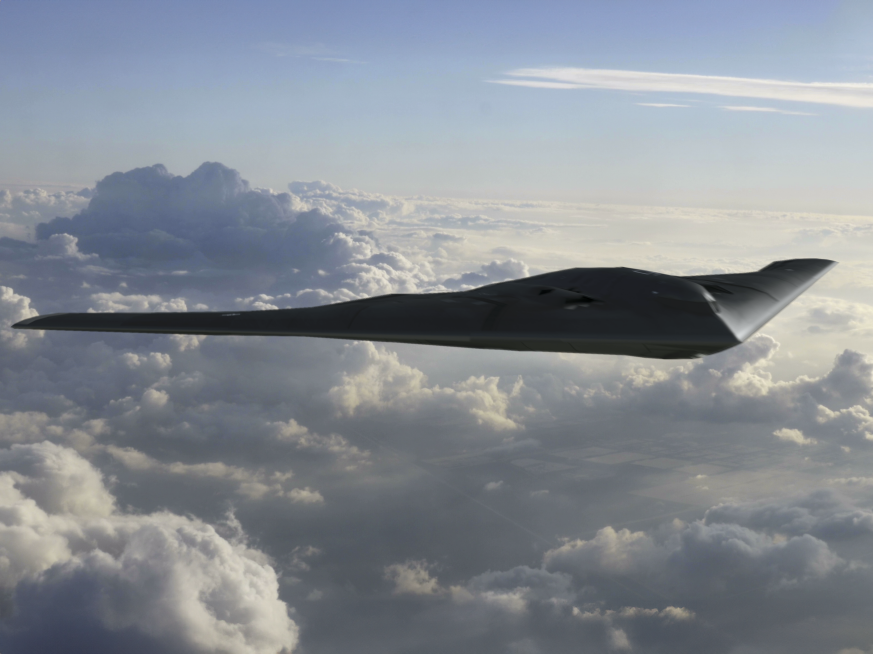
Forward Defense, housed within the Scowcroft Center for Strategy and Security, generates ideas and connects stakeholders in the defense ecosystem to promote an enduring military advantage for the United States, its allies, and partners. Our work identifies the defense strategies, capabilities, and resources the United States needs to deter and, if necessary, prevail in future conflict.
Image: Engineers perform checks on Europe's new MTG-I1 satellite designed to improve weather forecasting at the Thales Alenia Space plant in Cannes, France September 7, 2022. REUTERS/Tim Hepher
